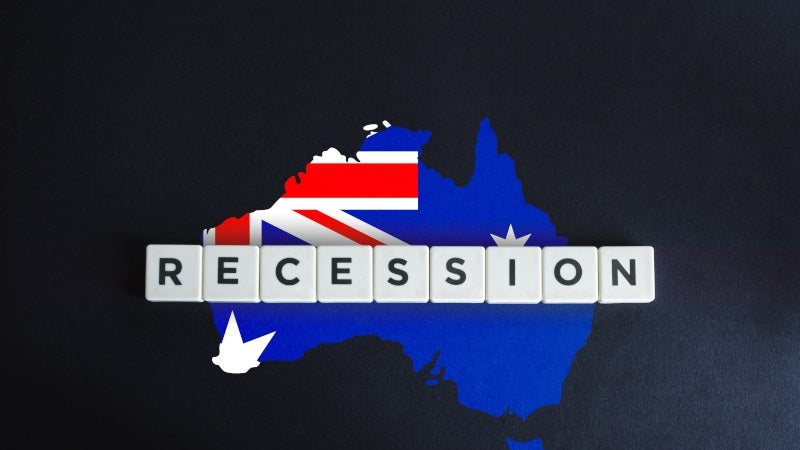The Australian economy officially entered recession as it posted two consecutive quarters of negative GDP growth. Despite government measures such as increased spending and cutting interest rates to zero, the country has not been able to avoid a recession. Macroeconomic influencers share their views on the Covid -19 impact.
Timothy McBride
Timothy McBride, Bernard Becker Professor at Washington University, shared an article on Australia entering recession for the first time in decades, following two consecutive quarters of negative growth. Even though the country was able to avoid any major impact from the 2008 global financial crisis, it has not been able to escape the impact of the pandemic.
Australia may find it difficult to recover in the post-Covid-19 scenario due to slowdown in growth of China, which is its biggest trade partner. Further, the country may face other long-term problems such as climate change disasters including wildfires, wage growth stagnation and a housing bubble.
Unemployment levels also remain high at 7.5%, which is the worst in 22 years. The figures are expected to rise as the downturn continues.
Australia Enters Its First Recession in Nearly 30 Years https://t.co/BomXxRr72l
— Timothy McBride (@mcbridetd) September 2, 2020
 GlobalData Strategic Intelligence
GlobalData Strategic IntelligenceUS Tariffs are shifting - will you react or anticipate?
Don’t let policy changes catch you off guard. Stay proactive with real-time data and expert analysis.
By GlobalData
Howard Archer
Howard Archer, chief economic advisor to EY ITEM Club, shared an article on warning issued by the Bank of England (BoE) that the UK economy is at a far greater risk from the Covid-19 pandemic. The BoE estimates that the economic output of the UK could permanently be 1.5% lower due to the pandemic.
The BoE had earlier estimated that the economy would recover to pre-Covid levels by the end of next year. The bank has revised its estimate that some sectors may not recover to pre-Covid levels, which may reorient the economy.
#BOE #MPC members #Ramsden & #Vlieghe clearly cautious on #UK #economy in Treasury testimonies. Governor #Bailey now doubts #inflation could briefly turn negative as many businesses not passing on #VAT cut for hospitality sector as much as expected https://t.co/JXh2lBGXWM
— Howard Archer (@HowardArcherUK) September 2, 2020
Charlie Robertson
Charlie Robertson, global chief economist at Renaissance Capital, tweeted a chart on the GDP figures in emerging markets. The chart shows that economies in eastern Asia are performing better than the Eurozone (-15%), US (-9%) and Japan (-10%) compared to a weighted average of -10%.
Robertson noted that majority of emerging economies do not have the risk of a second wave of lockdowns, which is encouraging for the second half of 2020.
Emerging market (EM) GDP figures show east Asia unsurprisingly doing best. Most did better than the Eurozone (-15%). US -9% and Japan -10% are similar to EM unweighted average at -10%
Most of EM doesn't have second wave lockdown risk which is encouraging for 2H20 https://t.co/oK5mZMYENC pic.twitter.com/Na2hOODDF2
— Charlie Robertson (@RencapMan) September 2, 2020
Colin Williams
Colin Williams, professor of public policy at the University of Sheffield, shared an article on warnings issued by the Federation of Small Businesses (FSB) that the £2bn ($2.7bn) youth jobs scheme may not be enough to beat the recession caused by the pandemic.
The scheme covers 100% of pay on the relevant minimum wage apart from insurance and pension contributions. The government aims to support the new generation through the scheme and build a stronger economy.
The FSB noted that more action may be needed to support employers including clarity on plans for apprentices and increased focus on technical education and skills.
UK businesses warn £2bn youth jobs scheme not enough to beat Covid recession https://t.co/LUwSNLDUvt
— Colin Williams (@Colin_CWilliams) September 2, 2020
Justin Wolfers
Justin Wolfers, a professor at the University of Michgan, shared an article on how the official numbers are understating actual inflation rates. The reasons for this difference are attributed to the way inflation is measured.
The article notes that the Consumer Price Index considers the cost of a fixed basket of goods but the goods being purchased are constantly changing particularly during the pandemic.
Further, the pandemic has changed where and how people are buying goods. Instead of going to stores, people are purchasing online where prices are slightly higher. These differences are not being accounted for when inflation is being measured thereby distorting the actual figures.
https://twitter.com/JustinWolfers/status/1301169513514307585





